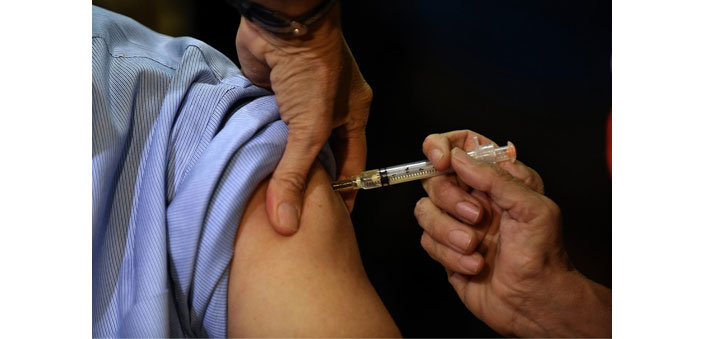The two most effective means of preventing disease, disability, and death from infectious diseases have been sanitation and immunisation. The practice of immunisation dates back hundreds of years. Edward Jenner is considered the founder of vaccinology in the West in 1796, after he inoculated a 13-year-oldboy with vaccinia virus (cowpox), and demonstrated immunity to smallpox. In 1798, the first smallpox vaccine was developed.
Over the 18th and 19th centuries, systematic implementation of mass smallpox immunisation culminated in its global eradication in 1979. Despite the evidence of health gains from immunisation programmes, there has always been resistance to vaccines in some groups. The late 1970s and 1980s marked a period of increasing litigation and decreased profitability for vaccine manufacture, which led to a decline in the number of companies producing vaccines.
The past two decades have seen the application of molecular genetics and its increased insights into immunology, microbiology and genomics applied to vaccinology. Vaccination started with adults and presently, at least in India, there is hardly any concept of adult vaccination. GIVS (Global Immunisation vision & strategy 2006 – 2015) WHO UNICEF vision says every child, adolescent and adult must have equal access to immunisation as provided for in their national schedule.
Why do adults require vaccines?
Vaccine preventable diseases specifically influenza and pneumococcal diseases kill hundreds of times more adults than children every year. Adult immunisation coverage levels are low. Following are some vaccine-preventable diseases and their mortality and morbidity rates:
All the above vaccines are preventable in adults. Senior citizens are more susceptible to serious infections caused by common pathogens. Some of the vaccines received in childhood, their immunity declines over a period of time especially Tetanus and Pertusis, and require a booster dose to protect in adulthood. Also getting vaccinated against pertussis is known to be protective for small babies at home.
One of the most important reasons adults identify for not receiving a vaccine is the lack of provider recommendation for the vaccine. Apart from ignorance about adult vaccines, there is a general feeling that immunisation is only for kids. There is needle phobia, cost, vaccine myths, and limited access to vaccines, all of which contribute to lack of awareness for adult vaccination.
The main adult vaccines available are:
Recommended adult vaccines
Routine Influenza vaccination is advisable for all elderly people above 50 years and health care providers. Certain populations have higher incidence of Invasive Pneumococcal Disease (IPD) and are vaccine preventable. For example, adults who have chronic heart disease are three times more at risk for IPD.
Similarly, adults or children having structural heart disease or diabetes or adults having Chronic Obstructive Pulmonary Disease are six times more prone for IPD. Alcoholics are eleven times and immunocompromised patients are 25 to 50 times more prone to develop IPD. Not only underlying comorbid conditions are more prone but as age increases, with underlying comorbid conditions, the risk of developing IPD also proportionally increases.
Diabetics are about three times more likely to die with flu and pneumonia. Diabetics have a normal humoral response to pneumococcal vaccination. Pneumoccocal immunisation in diabetic patients significantly reduces morbidity and mortality related to pneumoccocal disease.
Yearly influenza vaccine taken especially among elderly and those having comorbid conditions, reduces hopitalisation risk by upto 40 % and reduces the morbidity and mortality. The new pneumococcal conjugate 13 valent vaccine not only has an impact on IPD but reduces the risk of developing pneumonia by 45%.
Influenza vaccines are effective in the prevention of influenza illness, although improved vaccines are needed. Inactivated and live-attenuated vaccines are available in trivalent and quadrivalent formulations.
The objectives of vaccination include protection of the individual, as well as protection of the population through herd immunity. Flu vaccination of adults is also associated with decreased absenteeism from work or school and is significantly cost effective, but these benefits may not be seen in years when there is not a good match between vaccine and circulating viruses
Conclusion
Vaccines aren’t just for kids. Getting vaccinated not only protects you from diseases, it can also help you protect the health of people around you, who may not be able to get vaccinated themselves, like infants and people going through cancer treatment. Vaccines are for everyone, not just children.
In fact, there are some vaccines that are specifically recommended for adults. These ‘adult’ vaccines protect against diseases that are more common in adults than children. Some vaccines protect against diseases that can be more serious when contracted by adults. Other adult vaccines may actually be boosters of vaccines that you received as a child. Boosters “refresh” the immune system’s memory of how to make the tools to fight a pathogen, so that it can continue to provide protection against the disease. We can conclude that adult immunisation must become a fundamental part of routine patient care. Adult vaccination saves lives.
Dr. Nagvekar is attached to Lilavati Hospital, Bandra, and Global Hospitals as Infectious Diseases Consultant.


 [/column]
[/column]